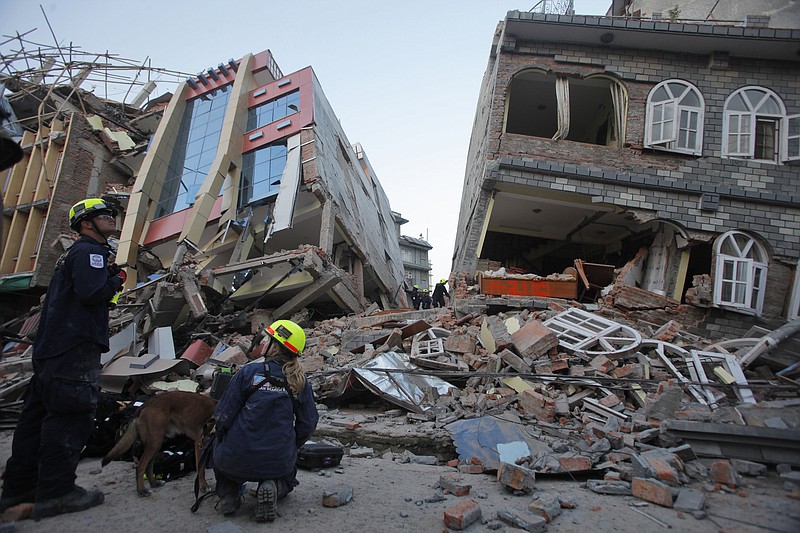Our hopes and prayers are offered for Nepal and its people after another series of major earthquakes shook the Himalayan nation on Tuesday, just two weeks and two days after a 7.8 quake there killed more than 8,000, left more than 20,000 injured and thousands more missing.
Tuesday's quakes -- the largest a 7.3 magnitude -- killed at least 68 and injured another 1,261 people, according to early reports. A U.S. military helicopter, six marines and two Nepalese soldiers working a relief mission are missing, according to news reports.
Moving mountains
After the first quake, scientists reviewing satellite data found that part of the Himalayas had dropped close to 5 feet as the pressure between two tectonic plates pushing against each other became too great, resulting in an earthquake. In addition to the Himalayas dropping, the area of Nepal near Kathmandu rose by about the same number of feet, according to a Monday story posted on the "Popular Science" website. But scientists believe the adjustments aren't likely to last long. As the earth's plates continue to push and pull against each other, the area of the Himalayas that sank will get squashed up and back into place, and Kathmandu will settle back down.Source: www.popsci.com/after-earthquake-himalayas-drop-three-feet
The latest earthquake is reported to have affected at least half of the small Asian country sandwiched between China and India.
Thousands are still living outside since the first quake struck on April 25. Many are now homeless or unwilling to go back into their damaged homes for fear of further collapses during the frequent aftershocks. Aid agencies are concerned about the fate of those people forced to sleep and live in the rough. Unicef has said 1.7 million children already were in need of emergency assistance even before Tuesday's quakes.
Aside from the destruction, another real damage is mental, according to journalist Pete Pattisson with The Guardian.
"It's like living in a horror movie. Anytime, any place, anything can happen," Pattisson quotes Dr. Rumina Malla Joshi, as she stood outside her home in a residential area of Patan in the south of the capitol city Kathmandu. "We're prepared to run at any time. It's constant fear, and the unpredictability makes it even more terrifying."
Pattisson said the city has been hit by scores of aftershocks and earthquakes in recent weeks, making people perpetually tense and jittery. "A strong gust of wind, the loud squawking of crows or a distant thunderstorm is enough to put people on edge. Even minor tremors have sent people rushing outside. Today's earthquake has only intensified those fears," Pattisson wrote.
"I'm very scared. I feel like the earth is still moving. It's like being on a boat," Amrit Bhattarai told the reporter. "My mental state is totally out of order."
Nearby, Bishal Pudasaini agreed. "We were just beginning to live normally again and sleep inside, but now it feels like I'm about to have a heart attack."
Landslides continue to happen, and the monsoon season begins in June. Our hearts go out to these beleaguered people.
